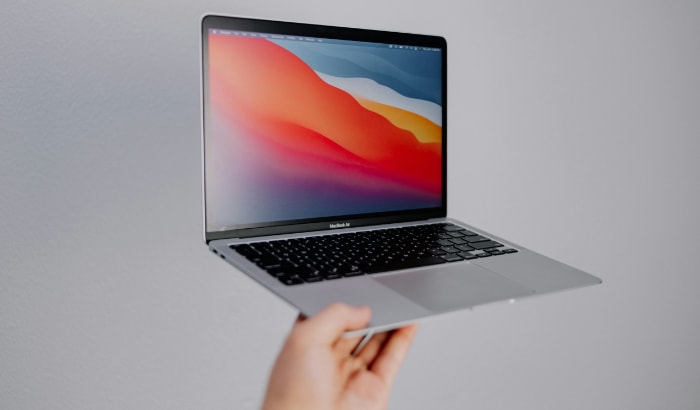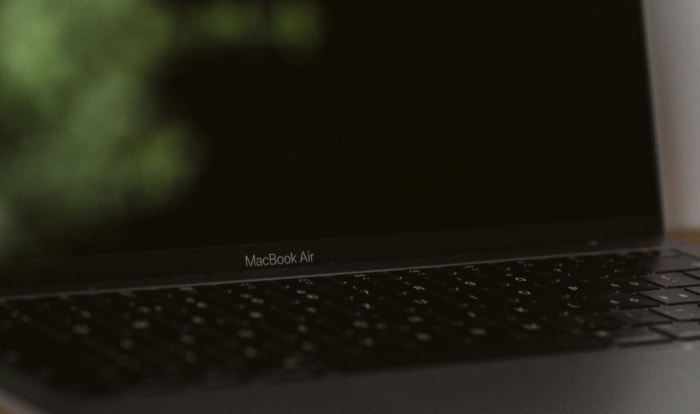MacBook Air Showdown: 8GB vs. 16GB

Choosing between the 8GB and 16GB MacBook Air models might seem like a simple decision, but it’s one that can significantly impact your digital lifestyle. As a staple of sleek design and powerful performance, the MacBook Air has cemented its status among students, professionals, and technology enthusiasts alike.
Yet, beneath its polished surface lies a crucial choice that dictates how your favorite applications run, how smoothly your workflows unfold, and how your future with technology shapes up.
Understanding RAM and Its Role
Random Access Memory (RAM) is a critical component in your MacBook Air, serving as the immediate workspace for your system. Think of it as a desk where all your current tasks are laid out.
The larger the desk, the more projects you can work on simultaneously without clutter. Similarly, more RAM allows your computer to handle more applications at the same time without slowing down.
The Function of RAM in Your MacBook Air
RAM plays a pivotal role in determining how efficiently and swiftly your MacBook Air operates. It temporarily stores the data your system needs right now or in the near future, providing quick access to your processor.
This fast-paced operation is crucial for everything from browsing the internet with multiple tabs open to editing high-resolution videos.
RAM’s Impact on Performance
The amount of RAM in your MacBook Air significantly influences its performance. With 8GB of RAM, your MacBook can handle everyday tasks smoothly.
However, when you step up to more demanding applications or multitasking scenarios, 16GB of RAM provides a noticeable boost. It’s not just about handling the workload; it’s about ensuring a seamless, lag-free experience, especially for power users who demand peak performance from their machines.
How Multitasking Relies on RAM
Multitasking is a common practice in our digital age, and how well your MacBook Air manages it depends largely on RAM. Each open application or browser tab consumes a portion of RAM.
With 8GB, you might find yourself hitting a ceiling when too many applications are open. In contrast, 16GB offers a larger buffer, accommodating heavier multitasking without compromising on speed or efficiency.
MacBook Air 8GB Model
The MacBook Air with 8GB of RAM is a model of efficiency and compact power. Designed for users who prioritize mobility and battery life, this version balances performance with energy efficiency.
It’s an ideal choice for those who manage everyday tasks like browsing, document editing, and media consumption without the need for extensive multitasking or high-end creative work.
Ideal Use Cases for the 8GB Variant
This model shines in scenarios where the computing demands are moderate. For students taking notes, professionals handling business applications, or casual users enjoying streaming and social media, the 8GB MacBook Air offers ample power.
Its capability to handle these tasks seamlessly makes it a reliable choice for those who value speed and efficiency in standard computing tasks.
Advantages of the 8GB Model
One of the key strengths of the 8GB MacBook Air is its balance between performance and portability. It offers a lightweight solution without compromising on the essential power needed for everyday tasks.
The battery life is impressive, catering to those who are always on the move. Additionally, the cost is relatively lower than its 16GB counterpart, making it an economically attractive option without sacrificing quality performance for regular use.
Limitations of the 8GB Model
While the 8GB model handles routine tasks with ease, it has its limitations when it comes to more demanding applications. Creative professionals using intensive software for video editing or graphic design might find the 8GB RAM constraining.
Also, heavy multitasking, such as running multiple resource-intensive applications simultaneously, could lead to slower performance. It’s crucial for potential buyers to assess their needs and understand that while the 8GB model excels in many areas, it might fall short in high-demand scenarios.
MacBook Air 16GB Model
The MacBook Air with 16GB of RAM is a powerhouse wrapped in sleekness, catering to users who demand more from their device. It’s engineered to handle not just the everyday tasks but also the intensive workloads of creative professionals and multitaskers.
This model stands out for its ability to manage complex applications and multitasking with remarkable ease, all while maintaining the signature portability and style of the MacBook Air.
Ideal Scenarios for the 16GB Variant
The 16GB MacBook Air is the go-to choice for power users. Whether it’s for graphic design, video editing, music production, or handling large datasets, this model delivers.
Its robust memory allows for smoother operation of memory-intensive applications and the freedom to switch between tasks without performance hiccups. If your work or passion involves pushing the boundaries of creativity and productivity, the 16GB model is tailored for you.
Advantages of Opting for 16GB
Choosing 16GB of RAM opens up a realm of possibilities. The most significant advantage is the sheer performance boost in handling complex tasks and running multiple applications simultaneously.
This model is also more future-proof, ready to meet the increasing demands of newer software and updates. For users who foresee their needs evolving or escalating, the 16GB MacBook Air offers the assurance that their device won’t fall behind.
Potential Cons of the 16GB Model
While the 16GB model is a powerhouse, it comes with a higher price tag. This investment is justified by its superior performance, but it’s essential for buyers to evaluate whether their typical use justifies the cost.
Moreover, while the 16GB model still boasts impressive battery life, it may slightly underperform in this aspect compared to the 8GB model, particularly under heavy use, due to its more demanding components.
Performance Comparison

When it comes to handling everyday tasks such as web browsing, word processing, and streaming media, both the 8GB and 16GB MacBook Air models perform admirably. Users might not notice significant differences in these scenarios, as both models are more than capable of managing day-to-day activities smoothly and efficiently.
However, the true distinction in performance begins to surface as the complexity and number of tasks increase.
Handling Professional and Creative Workloads
For professionals and creatives, the 16GB MacBook Air is in its element, handling intensive software for photo editing, video production, and music creation with a noticeable edge over the 8GB model. The larger RAM allows for smoother operation of demanding applications, and users can expect less lag, faster rendering times, and a more fluid experience when working with large files or multitasking.
Multitasking and Memory-Intensive Applications
Multitasking is a critical aspect where RAM plays a pivotal role. With 8GB of RAM, users may encounter limitations when running multiple applications or numerous browser tabs simultaneously.
In contrast, the 16GB MacBook Air provides a more robust platform, allowing users to switch between tasks seamlessly and maintain productivity without the system bogging down.
Price Considerations
When choosing between the 8GB and 16GB MacBook Air models, price is a significant factor. The 16GB model typically comes with a higher price tag, reflecting its enhanced performance capabilities.
However, it’s crucial to assess this cost in the context of your individual needs and the value you expect to derive from the device. The decision isn’t just about affordability; it’s about investing in a tool that aligns with your lifestyle, work, and aspirations.
Performance Per Dollar
Understanding the concept of performance per dollar can help in making an informed decision. It’s about measuring the additional benefits you get for each extra dollar spent.
If the performance enhancements of the 16GB model significantly enhance your productivity or creative capabilities, the extra cost may offer high value. Conversely, if your demands are adequately met by the 8GB model, the additional investment in the 16GB variant may not translate into a perceptible benefit, making the 8GB model a more cost-effective choice.
Budgeting for Your MacBook Air
Budgeting for a MacBook Air involves more than just considering the purchase price. It’s about reflecting on your long-term needs and the potential costs of upgrades or replacements if your chosen model doesn’t keep pace with your requirements.
The 16GB model, with its higher upfront cost, could potentially offer greater longevity and relevance, potentially offsetting the need for an earlier upgrade.
The Price-Performance Trade-off
The decision between the 8GB and 16GB models is essentially a trade-off between price and performance. While the 8GB model offers a balance of performance and value, ideal for users with moderate needs, the 16GB model represents a higher level of investment in your productivity and creative potential. It’s about weighing immediate cost savings against the benefits of a smoother, faster, and more future-proof user experience.
Making the Right Choice
The journey to picking the perfect MacBook Air begins with a clear assessment of your computing needs. Reflect on the nature of your tasks, the intensity of your software usage, and your multitasking habits.
If your daily activities revolve around web browsing, document editing, and other light tasks, the 8GB model might be your match. However, if your routine involves resource-intensive applications, professional-level creative work, or heavy multitasking, leaning towards the 16GB model could be a wise move.
Considering Future Requirements
While your current needs are a significant factor, it’s also vital to ponder your future requirements. As software becomes increasingly sophisticated and resource-demanding, having a system that remains competent and agile is crucial.
If you anticipate a progression in your technological needs or a shift towards more intensive applications, the 16GB model offers a buffer that can accommodate future growth.
Balancing Cost and Performance
Finding the sweet spot between cost and performance is key. The 8GB MacBook Air offers a cost-effective solution for everyday computing, while the 16GB variant stands as a testament to high performance and future readiness.
Weigh the immediate cost against the long-term benefits, considering not only the performance but also the potential longevity and relevance of your choice.
Reflecting on Lifestyle and Mobility
Your lifestyle and mobility should also influence your decision. If you’re always on the move, value long battery life, and your computing demands are moderate, the efficiency and portability of the 8GB model might resonate with your lifestyle.
On the other hand, if your work or hobbies require a powerhouse that can handle intensive tasks without compromise, the 16GB model aligns well with a dynamic, performance-oriented lifestyle.
Conclusion
Choosing between the 8GB and 16GB MacBook Air models is a decision that intertwines your current needs, future aspirations, lifestyle, and budget. Both variants of the MacBook Air boast the signature sleek design, portability, and performance that users have come to expect. The 8GB model is a testament to efficiency, perfectly suited for everyday tasks and light multitasking, offering a balance of performance and value. On the other hand, the 16GB model caters to power users with its robust performance, making it ideal for intensive applications, creative work, and heavy multitasking.
Making this choice involves a comprehensive understanding of your personal and professional requirements, a forward-looking approach to future-proofing your investment, and a careful consideration of the price-performance balance. Whichever model you choose, you are investing in a device that is renowned for its quality, innovation, and user-centric design.


